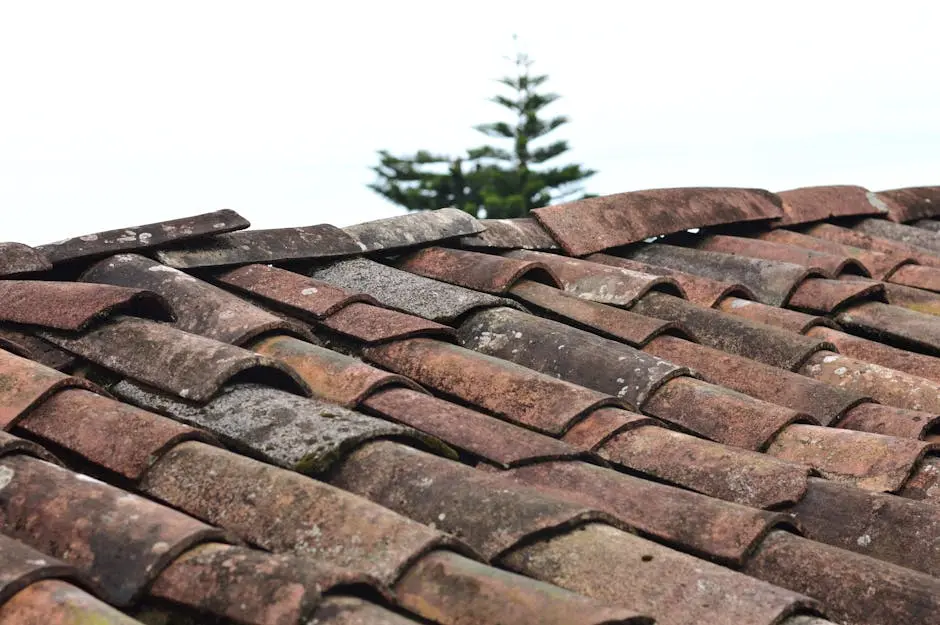10 Best Roofing Materials for Weather Resilience
Choosing the right roofing material is crucial for protecting your home from the elements. With so many options available, it can be overwhelming to decide on the best one for your needs. In this article, we’ll explore the top ten roofing materials that offer excellent weather resilience, making it easier for you to select the right one for your home.
1. Asphalt Shingles: A Popular Choice
Asphalt shingles are widely used due to their affordability and ease of installation. They offer good weather resistance and come in various styles and colors to suit different aesthetic preferences.
These shingles are composed of a fiberglass base coated with asphalt, which provides waterproofing and durability. One of the reasons why asphalt shingles are so popular is their adaptability; they can be fitted to many roof shapes and are relatively easy to repair. This makes them ideal even in regions with moderate climatic challenges where severe weather isn’t an everyday concern.
Despite their many advantages, asphalt shingles do have some limitations. They tend to have a shorter lifespan compared to other materials, typically lasting about 20-30 years. Additionally, they can be susceptible to damage from extreme temperature fluctuations and high winds over time, necessitating periodic inspections and maintenance.
2. Metal Roofing: Durable and Long-Lasting
Metal roofs are known for their durability and longevity. They can withstand harsh weather conditions, including heavy snow and high winds, making them an excellent choice for weather resilience.
Available in a variety of materials like aluminum, copper, and steel, metal roofs provide exceptional durability. Their reflective properties help in reducing energy costs by keeping homes cooler in the summer, a feature particularly advantageous in warm climates. They can also be installed with minimal slope, making them an ideal candidate for modern, flat or low-pitched roofs.
One of the most significant benefits of opting for metal roofing is its lifespan, which can reach up to 50 years or more with proper maintenance. However, the initial cost can be higher compared to other materials, and improper installation can lead to noise issues during rainfall. Despite these challenges, the investment often pays off due to the reduced need for frequent repairs.
3. Clay Tiles: Traditional Beauty and Strength
Clay tiles offer a classic and timeless look while providing exceptional weather resistance. They are fire-resistant and can endure extreme temperatures, though they are heavier and require a strong structural support.
Known for their durability and distinctive aesthetic, clay tile roofing harks back to centuries-old architectural styles yet remains a relevant choice today. Its Mediterranean and Spanish-style influences make it a preferred option for homeowners aiming for a unique yet traditional look. Also, clay tiles are highly resistant to mildew and rot, making them suitable for areas with high humidity.
It’s important to note that clay tiles might come with a heftier price tag initially. However, their longevity and minimal maintenance can make them a cost-effective solution in the long term. They perform exceptionally well in warm, dry climates but might not be the best fit for locations prone to regular freeze-thaw cycles, which can cause them to crack.
4. Slate Roofing: Elegance Meets Endurance
Slate is a premium roofing material that offers unmatched elegance and durability. It can last for more than a century and withstand severe weather, but it comes with a higher cost and weight.
Considered one of the finest roofing materials available, slate is renowned for its beauty and extreme longevity. Its natural stone composition provides a sophisticated charm that can elevate the appearance of any home. However, this premium material requires professional installation due to its weight, which necessitates additional structural support.
While slate is highly durable, its cost can be prohibitive. It is advisable for homeowners to ensure the substantial upfront investment is worth the long-term benefits, such as enduring severe weather and requiring little maintenance over time. Additionally, since slate is a natural stone, it is environmentally sustainable, adding to its appeal for eco-conscious individuals.
5. Wood Shingles: Natural Charm
Wood shingles provide a natural and rustic look, offering moderate weather resistance. Cedar is a popular choice for its resilience and ability to repel insects, though regular maintenance is necessary.
The aesthetic appeal of wood shingles lies in their ability to blend seamlessly with the natural environment. Cedar and redwood are often the materials of choice due to their natural resistance to decay. However, maintaining wood shingles requires regular inspections and treatments to prevent moss and mildew growth, encouraging longevity and sustained protection against the elements.
Wood shingles offer decent insulation properties, helping regulate indoor temperatures by trapping warm air during the winter months and maintaining cooler interiors in summer. Due to their organic origin, they are also biodegradable and eco-friendly, which remains a significant consideration for many environmentally aware homeowners.
6. Synthetic Roofing: Versatile and Adaptable
Synthetic roofing materials, like rubber or polymer blends, mimic the appearance of natural materials at a fraction of the cost. They are lightweight, durable, and can handle various weather conditions well.
These materials are engineered to resemble traditional roofing materials, like slate or cedar shakes, without the heavy weight or high maintenance. Synthetic roofing is constructed to resist impact, making it a reliable option for areas prone to hail and storms. Its lightweight nature not only makes installation easier but also reduces the strain on the structure of the home.
A key advantage of synthetic roofing is its energy efficiency. Some options offer UV resistance, helping to regulate home temperatures and thus reduce cooling costs. Thanks to their durability and affordability, synthetic roofs present a viable alternative for those seeking both aesthetic appeal and performance without breaking the bank.
7. Concrete Tiles: Tough and Stylish
Concrete tiles are a cost-effective alternative to clay and slate, offering a similar appearance with good weather resistance. They are fire-resistant and come in various styles.
Due to their versatility, concrete tiles can mimic styles ranging from traditional clay to natural slate, while being significantly more affordable. These tiles are crafted from a mixture of cement, sand, and water, offering durability and the ability to withstand harsh winters and intense sun exposure alike.
Despite their strength, concrete tiles are heavier than some other materials and require a well-supported roof structure. They can be vulnerable to cracking under concentrated impact but generally perform admirably through typical wear and tear, offering a lifespan of up to 50 years with minimal maintenance.
8. Green Roofs: Eco-Friendly Innovation
Green roofs provide unique weather resilience by using vegetation layers to absorb rainwater and insulate the building. They’re environmentally friendly and contribute to urban biodiversity.
The sustainable nature of green roofs makes them an attractive choice for urban settings, where they can mitigate the heat island effect and improve air quality. They involve a complex system of membranes, drainage layers, and plant substrates that work together to create a living, breathing part of the building.
While they offer numerous benefits, the installation and maintenance of green roofs require specialized knowledge and skills, contributing to higher initial costs. However, the long-term environmental advantages and potential for energy savings often justify this investment, making them a modern favorite for eco-conscious builders and homeowners alike.
9. Solar Tiles: Energy-Efficient Roofing
Solar tiles combine weather-resistant roofing with energy production, offering a sustainable option for homeowners. They replace traditional roofing materials while harnessing solar energy.
Considered an innovation in sustainable architecture, solar tiles allow homeowners to generate their own electricity. These roofs essentially double as miniature solar panels, providing renewable energy while protecting the home. With advances in technology, solar tiles have become more aesthetically pleasing and less obtrusive compared to traditional solar panels.
Despite their relative novelty, solar tiles are gaining popularity as they offer long-term savings on energy bills. They require a substantial initial investment, but the reduction in utility costs, potential tax incentives, and decreases in carbon footprint provide compelling motives for environmentally minded homeowners.
10. Copper Roofing: Aesthetic and Sturdy
Copper roofing is both visually striking and extremely durable. It develops a unique patina over time and offers excellent weather resilience, although it has a higher initial cost.
The distinctive aesthetic of copper roofing brings a certain elegance to homes, with its warm, reflective glow eventually maturing into a protective green patina. This process not only enhances visual appeal but also bolsters resistance to corrosion and weather impacts.
Copper is malleable and doesn’t require frequent maintenance, enduring for over a century if kept in favorable conditions. While the upfront cost of copper roofing is quite high, its longevity and minimal need for repairs can provide tremendous value over its lifetime. Copper’s natural properties make it an attractive choice for high-end homes seeking a standout architectural feature.








